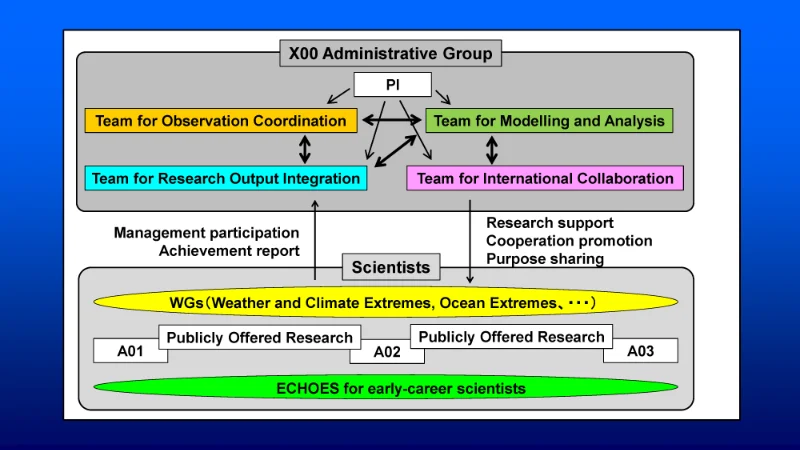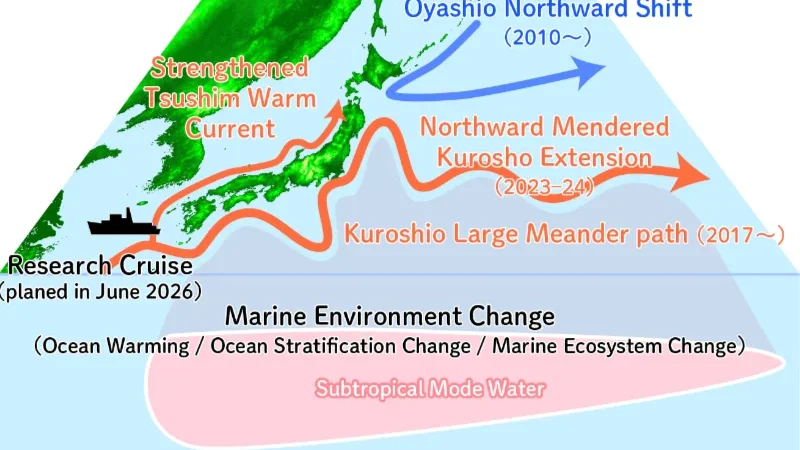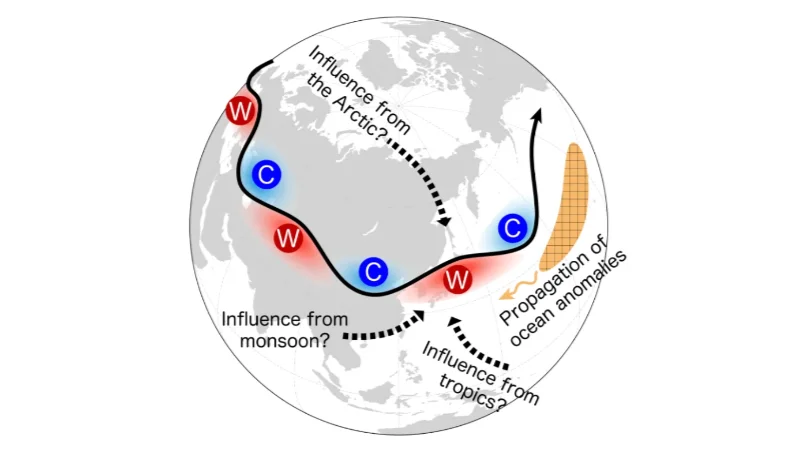Overview
Research Overview

he background shows sea surface temperature on August 23, 2023 (Anomalies from the average year. Unit: ºC. Japan Meteorological Agency).
Extreme heat in Japan in summer 2023 is still fresh in our memory. It was caused by global warming, meandering westerlies, and unusually high seawater temperature. Since one year ago, marine heat waves have existed over the Pacific Ocean off Tohoku with a temperature 5-6ºC higher than the average year, due mainly to the northward shift of the Kuroshio Extension. On the other hand, the Oyashio, which brings colder water from the north, has retreated greatly to the north since mid-2010s. The Japan Sea was also anomalously warm in summer 2023, while the Kuroshio south of Japan has taken a large-meander path since 2017 for the longest period observed. Together with ocean warming at twice the global average rate, ocean currents around Japan have begun to show totally different aspects, affecting not only weather but also fisheries. In recent years, the catch of Pacific saury and Japanese flying squid has been dropping drastically, while Japanese amberjack has expanded its habitat greatly northward.
The area around Japan is characterized by the world’s largest ocean heat release to the atmosphere in winter and recognized as a “Climatic Hotspot” representative of the western boundary regions of the world oceans. At the same time, the area is unique due to the existence of the Japan Sea between Japan and the continent. Through the previous Hotspot1 (JFY2010-14) and Hotspot2 (JFY2019-23) projects supported by MEXT Grant-in-Aid for Scientific Research on Innovative Areas, we have investigated mid-latitude air-sea interaction and its change under global warming. In the new Habitable Japan project (Hotspot3. JFY2024-28), we will expand our domain to atmosphere/ocean chemistry, marine ecosystems, and fisheries, aiming to answer the question “Will mild climate and abundant water/fisheries resources persist as a basis of survival for those of us living in Japan in the future?”
Research Group A01: Understanding of mid-latitude atmosphere/ocean variability under global warming
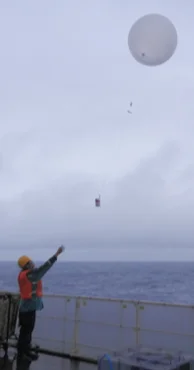
We will clarify variations/changes of ocean currents around Japan and their impact on coastal MHWs and marine ecosystems (A01-1). We conduct shipboard observations in the Japan Sea (Jan. 2026) and in the North Pacific off the Sanriku coast and in the East China Sea southwest of Kyushu (both Jun.-Jul. 2026) to clarify the influence of oceanic fronts and MHWs on atmospheric circulation and rainfall (A01-1/A01-2). We will also be clarifying the mechanism sustaining large-scale atmosphere/ocean heat and cold waves around the East Asia and the North Pacific (A01-3).
Research Group A02: Development of new methods and identification of basic processes
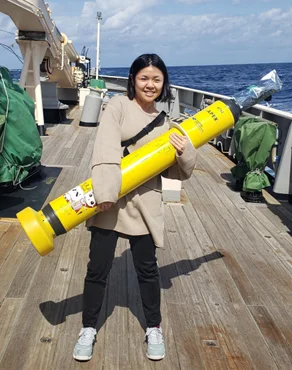
We will deploy profiling floats around the Kuroshio Extension to clarify biological production/decomposition (A02-4). We will also be conducting continuous observations at an island in the Japan Sea and another in the North Pacific to clarify the influence of aerosol particles generated from wave spray on heat/material exchanges across the sea surface (A02-5). We will additionally be creating a new data assimilation method that overcomes many discontinuities in the atmosphere/ocean fields to reproduce atmosphere-ocean-marine ecosystems coupling processes in the models (A02-6).
Research Group A03: Prediction and sustainability evaluation of mid-latitude atmosphere/ocean variability
We will evaluate the predictability of extreme oceanic events such as the Kuroshio large meander and MHWs, and clarify their impact on fisheries resources (A03-7). We will also take on prediction of monsoon modulating under global warming and that of extreme weather such as heavy rainfall/snowfall inherent in monsoon (A03-8). We will also further clarify variability and future change of mid-latitude climate that interact with the tropics and polar regions from a global perspective (A03-9).
Observation and numerical simulation are the two wheels of our Habitable Japan project. The observations include intense shipboard surveys in the Japan Sea and Pacific off Tohoku and in the East China Sea southwest of Kyushu, deployment of autonomous profiling floats with biogeochemical sensors around the Kuroshio Extension, and monitoring of aerosol particles on islands in the Japan Sea and Pacific. We will also diagnose and predict atmosphere/ocean phenomena by multiply using numerical models with different spatiotemporal scales and parameters, from regional models to global ones. Through these efforts, we will create integrated atmosphere and ocean science across atmosphere, ocean, and fisheries, and build a foundation for future predictions and projections.
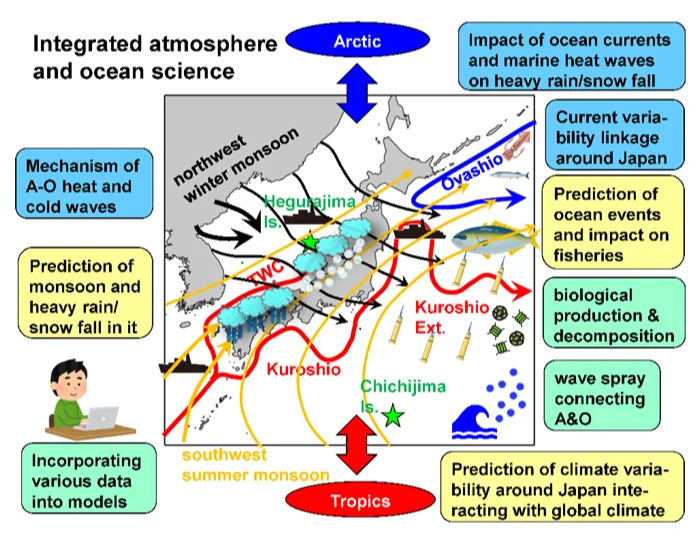
Planned Research
Administrative Group
Research Group A01: Understanding of mid-latitude atmosphere/ocean variability under global warming
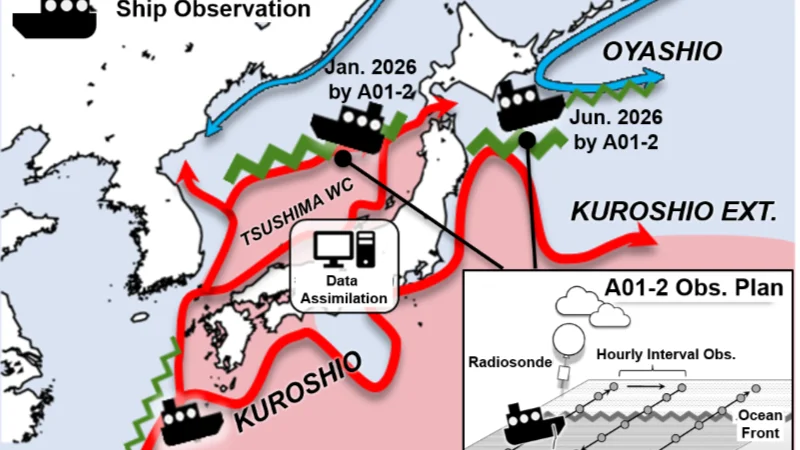
A01-2
Heavy rainfall and heavy snowfall associated with rapid warming of the ocean front around Japan
HONDA Meiji
Niigata U.
Research Group A02: Development of new methods and identification of basic processes

A02-4
Ocean circulation and biological production/decomposition in the CO2 uptake hotspot
TOYAMA Katsuya
Meteorological Research Institute
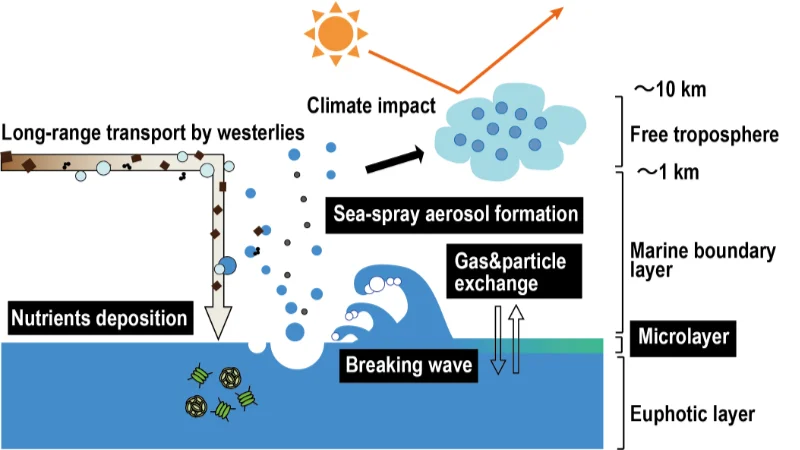
A02-5
Refined evaluation of dynamics of wave-associated aerosol particles and air-sea mass exchange
IWAMOTO Yoko
Hiroshima U.
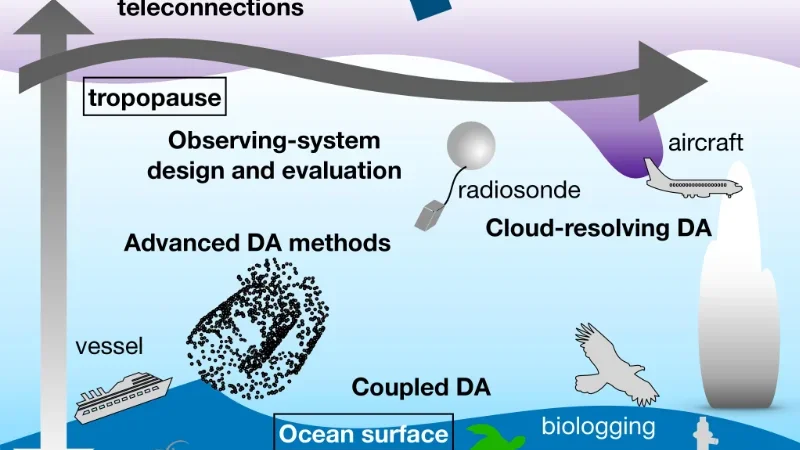
A02-6
Comprehensive data assimilation for optimal representation of atmospheric and oceanic environment with discontinuities
ENOMOTO Takeshi
Kyoto U.
Research Group A03: Prediction and sustainability evaluation of mid-latitude atmosphere/ocean variability
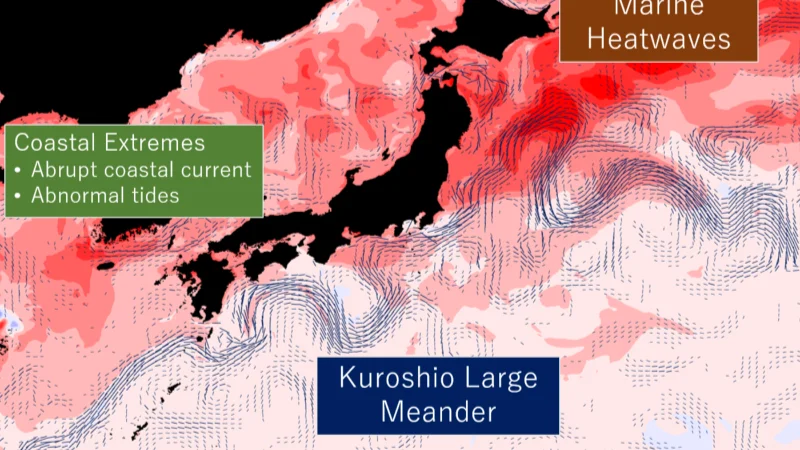
A03-7
Past, present and future of the Kuroshio large meander and ocean extremes: predictability and impacts on living marine resources
USUI Norihisa
Meteorological Research Institute
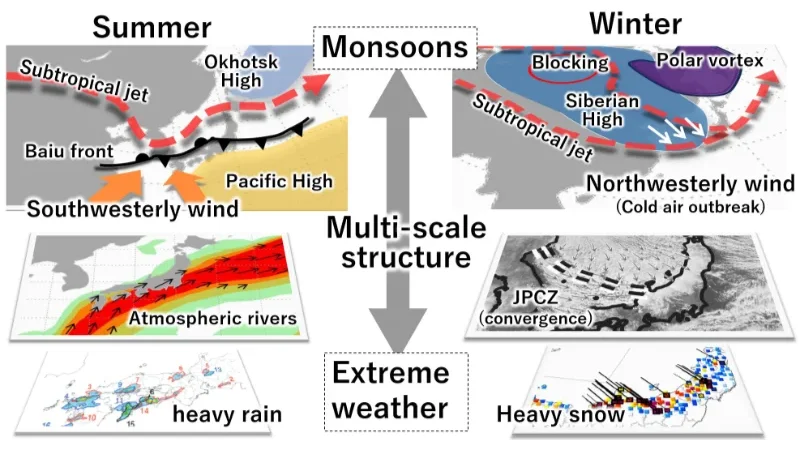
A03-8
Predictability of extreme weather events in Japan under changing monsoon conditions
SATO Tomonori
Hokkaido U.

A03-9
Extratropical climate variability and change bi-directionally interacting with the tropics and polar regions
TOKINAGA Hiroki
Kyushu U.
Publicly Offered Research
1st Period (FY2025-2026)

A01-K101
Development of a marine observation network in cooperation with the Japan Sea Benthic Fisheries and elucidation of the mechanism behind abnormal high wave events
TAMURA Hitoshi
Port and Airport Research Institute

A01-K102
Rapidly warming seas around northern Japan: investigating the phenomenon through ship-based and biologging observations
YOSHIDA Akira
Kyoto U.

A01-K103
Extract and evaluate rapid changes of the Kuroshio that cannot be detected by conventional observations
ICHIKAWA Kaoru
Kyushu U.

A01-K104
Seasonal prediction of heat extremes affecting Japan in a changing climate: predictability and mechanisms
MARTINEAU Patrick
JAMSTEC

A01-K106
Study on mechanisms to cause fish weight decrease in the 2010s using a fish growth-migration model
ITO Shin-ichi
U. Tokyo

A02-K107
Quantitative understanding of the supply processes for trace metals in the subtropical North Pacific
TAKANO Shotaro
Kyoto U.

A03-K108
Long-term modulation of the Kuroshio and Kuroshio Extension system and its impact on the Pacific warming pattern
TOZUKA Tomoki
U. Tokyo
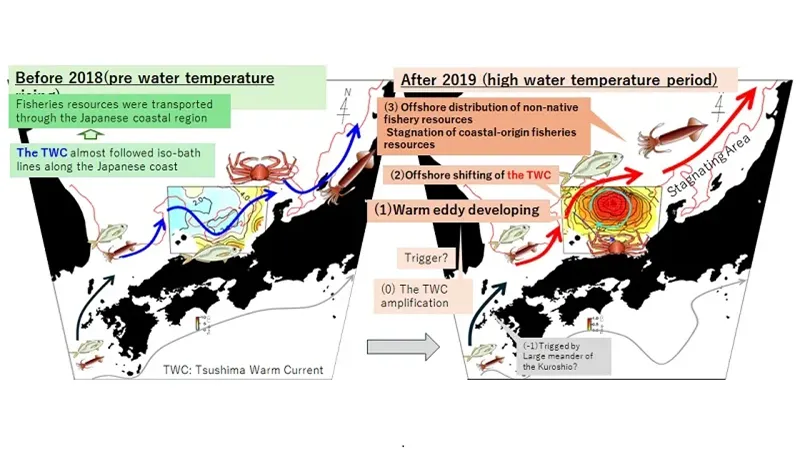
A03-K109
Elucidation of processes that drastic changes in the distribution of fishery resources can be caused by the Tsushima Warm Current meandering
IGETA Yosuke
Fisheries Resources Institute

A03-K110
Evaluation of diverse nitrogen supply processes to the Kuroshio Current and their impact on the subtropical gyre via nutrient transport
HORII Sachiko
Fisheries Resources Institute

A03-K111
New developments in ocean modeling: data-driven nesting models linking open ocean and coastal area
AOKI Kunihiro
Meteorological Research Institute

A03-112
Effects of climate change, human activity and heavy rainfall on long-term land-sea material transport
ZHANG Jing
U. Toyama
2nd Period (FY2027-2028)

AXX-X
Title
Name
ORG

AXX-X
Title
Name
ORG

AXX-X
Title
Name
ORG

